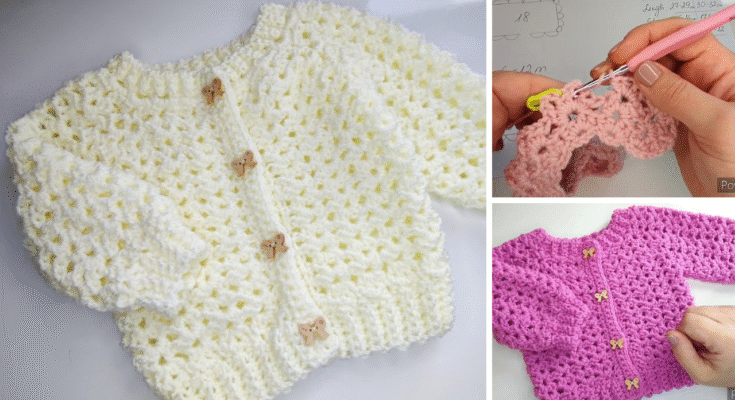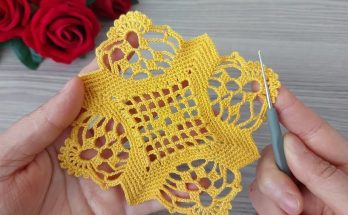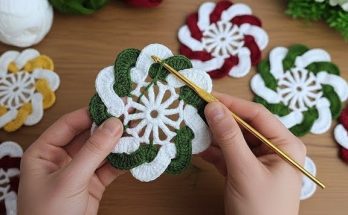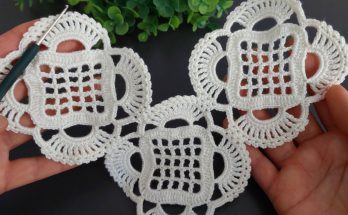How to Crochet a Summer Baby Cardigan: A Light & Lovely Layer for Little Ones
A lightweight baby cardigan is the perfect addition to a little one’s wardrobe, offering just enough warmth for breezy summer evenings or air-conditioned rooms without being too heavy. Crocheting a summer baby cardigan might seem like a big step, but with the right yarn, hook, and a simple pattern, it’s a very rewarding project for confident beginners and intermediate crocheters alike.
This detailed tutorial will guide you through creating a charming and practical summer baby cardigan, focusing on a top-down, seamless construction that minimizes seaming and makes for a beautifully finished garment.
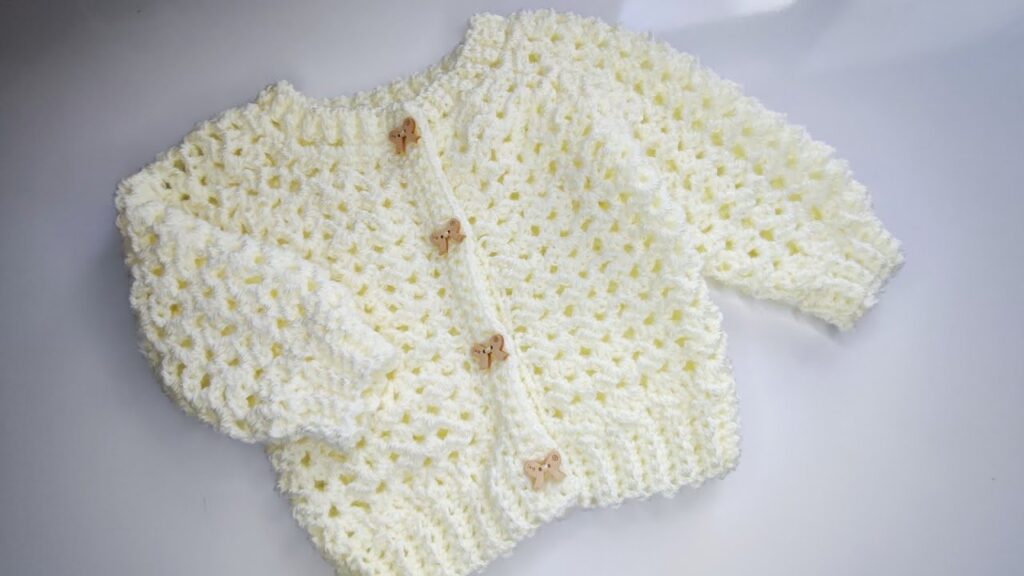
Why Crochet a Summer Baby Cardigan?
- Practical Layering: Ideal for unexpected chills, over dresses, or in cooler indoor environments.
- Lightweight & Breathable: Uses open stitches and breathable yarns perfect for warmer weather.
- Adorable Gift: A handmade cardigan is a cherished keepsake and a thoughtful present for baby showers or new arrivals.
- Skill Builder: Practice crucial garment techniques like working top-down, shaping raglan sleeves, and creating buttonholes.
- Seamless Construction: No side or shoulder seams means less finishing work and a smoother fit for baby!
1. Planning Your Summer Baby Cardigan: Size & Materials
Careful planning ensures your cardigan is comfortable, fits well, and has that lovely summer drape.
- Size: This pattern is written for 0-3 months (Newborn/Small Infant), with notes on how to adjust for larger sizes (3-6 months, 6-12 months).
- Finished Chest Circumference (approx.):
- 0-3 Months: 18 inches (46 cm)
- 3-6 Months: 20 inches (51 cm)
- 6-12 Months: 22 inches (56 cm)
- Pro Tip: Measure baby’s actual chest for best fit if possible, and add 1-2 inches (2.5-5 cm) for positive ease (wiggle room).
- Finished Chest Circumference (approx.):
- Yarn Choice (Crucial for Summer Comfort!):
- Fiber: Opt for 100% cotton, cotton blends, bamboo, or linen blends. These fibers are breathable, absorb moisture, and have excellent drape, making them perfect for summer wear. Avoid wool or heavy acrylics for this particular project.
- Weight: DK (Light Worsted / #3) weight yarn is ideal. It’s light enough for summer but still works up at a good pace.
- Quantity:
- 0-3 Months: Approx. 250-300 yards (230-275 meters)
- 3-6 Months: Approx. 300-350 yards (275-320 meters)
- 6-12 Months: Approx. 350-400 yards (320-365 meters)
- Always buy a bit extra to be safe!
- Stitch Pattern: We’ll use a combination of double crochet (dc) for the main body and chain spaces (ch-sp) for a light, airy feel.
- Foundation: We’ll use the Foundation Half Double Crochet (FHDC) technique for a stretchy, non-restrictive starting edge (highly recommended for garments!). If you’re new to FHDC, a chain and first row of HDC works too.
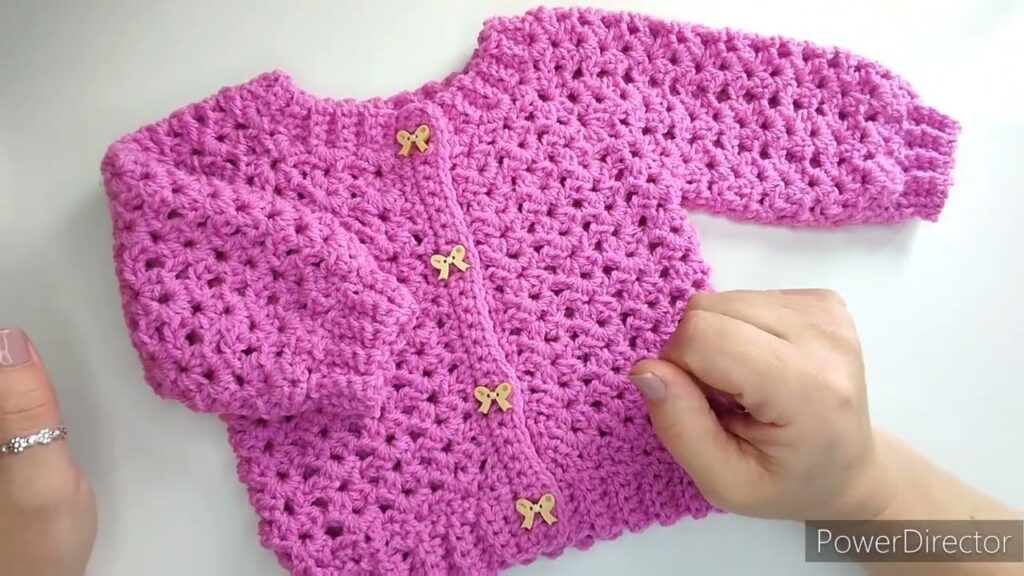
2. Materials You’ll Need
- Yarn: Your chosen quantity of DK (Light Worsted / #3) weight cotton or cotton blend yarn.
- Crochet Hook: 4.0 mm (G-6 US). (Or the size needed to obtain your gauge.)
- Scissors: For cutting yarn.
- Yarn Needle (Tapestry Needle): For weaving in ends.
- Stitch Markers (Essential!): At least 4, for marking raglan increase points.
- Measuring Tape: Crucial for checking gauge and garment dimensions.
- Small Buttons (Optional): 3-5 small (0.5-0.75 inch / 1.25-2 cm) buttons.
- Needle and Thread: For attaching buttons.
3. Essential Crochet Stitches & Techniques (Review & Practice)
Ensure you’re comfortable with these before you begin:
- Slip Knot
- Chain (ch)
- Slip Stitch (sl st)
- Single Crochet (sc)
- Half Double Crochet (hdc)
- Double Crochet (dc)
- Foundation Half Double Crochet (FHDC): (Highly recommended for garment necklines!) If new, search “Foundation Half Double Crochet tutorial” for visual help. It’s much stretchier than a regular chain row.
- Working in Rows: Turning your work at the end of each row.
- Understanding Turning Chains: We’ll use Ch 2 at the start of DC rows, which will count as the first DC.
- Raglan Increases: A specific increase method to shape the shoulders and sleeves in top-down garments.
4. Gauge Swatch: Your Blueprint for the Right Fit (Do Not Skip!)
Gauge is absolutely critical for garments to ensure the correct size.
- Make a Gauge Swatch (using dc):
- Chain 22.
- Row 1: Dc in the 3rd ch from hook, and in each ch across. (20 dc)
- Row 2: Ch 2 (counts as first dc), turn. Dc in each dc across. (20 dc)
- Repeat Row 2 until your swatch measures about 4 inches (10 cm) tall.
- Measure: Lay your swatch flat. Count how many dc stitches you have in 4 inches (10 cm) horizontally, and how many rows you have in 4 inches (10 cm) vertically.
- Target Gauge: Approximately 17-18 dc stitches in 4 inches (10 cm) and 10-11 rows in 4 inches (10 cm).
- Adjust:
- If you have more stitches/rows, your tension is too tight; go up a hook size.
- If you have fewer stitches/rows, your tension is too loose; go down a hook size.
- Remake your swatch until you match the target gauge as closely as possible.

5. Let’s Crochet Your Summer Baby Cardigan! (Top-Down Construction)
We’ll start at the neckline and work downwards, shaping the yoke, then separating for the body and sleeves.
Pattern Note: Ch 2 at the start of a row counts as the first DC.
Part 1: The Yoke (Neckline & Shoulder Shaping)
This section creates the neckline and the increases that form the shoulders and armholes.
- Starting Row (Neckline):
- FHDC Method (Recommended): Make 52 (56, 60) FHDC. This creates a stretchy starting edge.
- 0-3 Months: 52 FHDC
- 3-6 Months: 56 FHDC
- 6-12 Months: 60 FHDC
- Chain Method (Alternative): Ch 53 (57, 61). Dc in 3rd ch from hook and in each ch across. [52 (56, 60) dc]
- FHDC Method (Recommended): Make 52 (56, 60) FHDC. This creates a stretchy starting edge.
- Rnd 1 (Yoke Setup): Ch 2 (counts as 1st dc), turn.
- Dc in the next 7 (8, 9) sts (Right Front Panel).
- (Dc, ch 1, dc) in the next st (1st Raglan Increase corner – place stitch marker in ch-1 sp).
- Dc in the next 8 (9, 10) sts (1st Sleeve Panel).
- (Dc, ch 1, dc) in the next st (2nd Raglan Increase corner – place stitch marker in ch-1 sp).
- Dc in the next 14 (16, 18) sts (Back Panel).
- (Dc, ch 1, dc) in the next st (3rd Raglan Increase corner – place stitch marker in ch-1 sp).
- Dc in the next 8 (9, 10) sts (2nd Sleeve Panel).
- (Dc, ch 1, dc) in the next st (4th Raglan Increase corner – place stitch marker in ch-1 sp).
- Dc in the last 7 (8, 9) sts (Left Front Panel).
- [60 (64, 68) dc + 4 ch-1 sps]
- Rnd 2 (Yoke Increase): Ch 2 (counts as 1st dc), turn.
- Dc in each dc until you reach the 1st marked ch-1 sp.
- (Dc, ch 1, dc) in the marked ch-1 sp (move marker to new ch-1 sp).
- Dc in each dc until you reach the 2nd marked ch-1 sp.
- (Dc, ch 1, dc) in the marked ch-1 sp (move marker).
- Dc in each dc until you reach the 3rd marked ch-1 sp.
- (Dc, ch 1, dc) in the marked ch-1 sp (move marker).
- Dc in each dc until you reach the 4th marked ch-1 sp.
- (Dc, ch 1, dc) in the marked ch-1 sp (move marker).
- Dc in each remaining dc until the end of the row.
- [8 more dc than previous round, 4 ch-1 sps]
- Repeat Rnd 2: Continue repeating Rnd 2 for a total of 5 (6, 7) increase rounds.
- 0-3 Months: 5 rounds total (Rnd 1 + 4 repeats of Rnd 2)
- 3-6 Months: 6 rounds total (Rnd 1 + 5 repeats of Rnd 2)
- 6-12 Months: 7 rounds total (Rnd 1 + 6 repeats of Rnd 2)
- At the end of the final yoke round, your piece should lay relatively flat and the sleeve sections should be wide enough for baby’s arm.
- Final stitch count at end of yoke (before separating): 92 (104, 116) dc + 4 ch-1 sps.
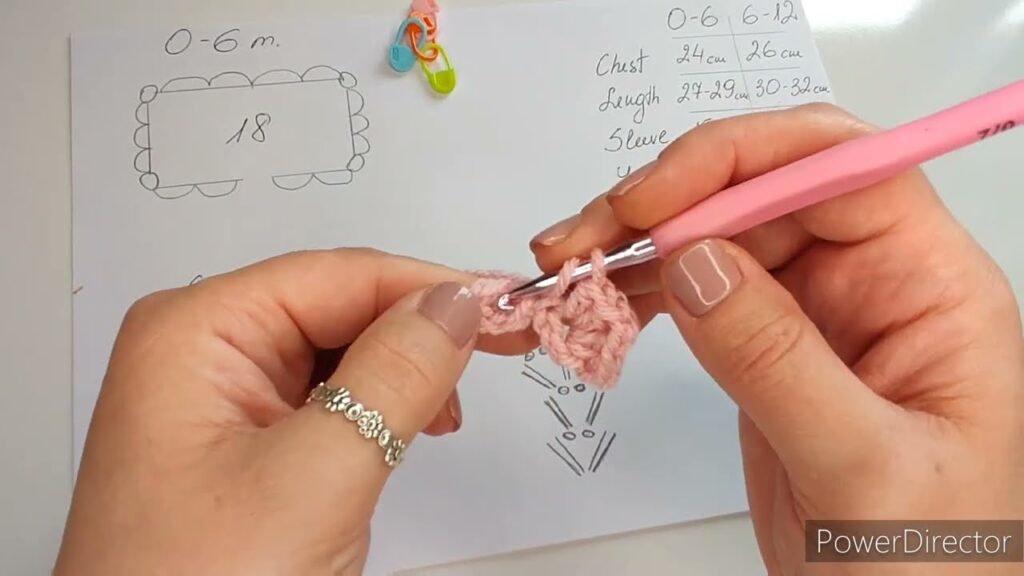
Part 2: Separating Body and Sleeves
This step creates the main body and defines the armholes.
- Next Round (Separation): Ch 2 (counts as 1st dc), turn.
- Dc in each dc until you reach the 1st marked ch-1 sp (Right Front Panel).
- Make Armhole: (Dc in marked ch-1 sp. Ch 2. Skip all stitches until the next marked ch-1 sp).
- Dc in the next marked ch-1 sp (this starts your Back Panel).
- Dc in each dc until you reach the 3rd marked ch-1 sp (Back Panel).
- Make Armhole: (Dc in marked ch-1 sp. Ch 2. Skip all stitches until the next marked ch-1 sp).
- Dc in the next marked ch-1 sp (this starts your Left Front Panel).
- Dc in each remaining dc until the end of the row (Left Front Panel).
- You will now be working on the main body of the cardigan.
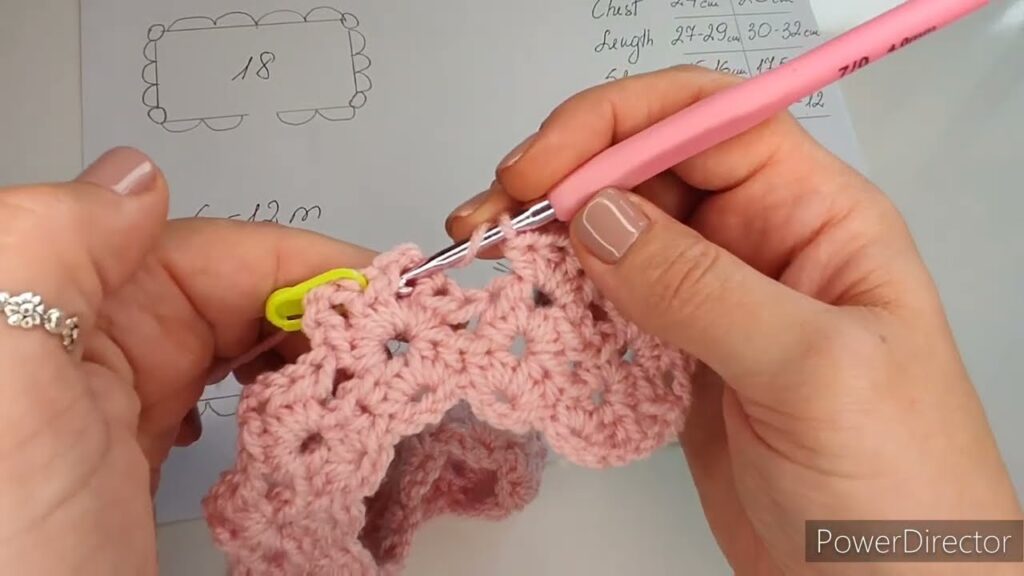
Part 3: The Body (Working Downwards)
Work down the body until you reach the desired length.
- Body Round 1: Ch 2 (counts as 1st dc), turn.
- Dc in each dc across. When you reach a ch-2 armhole space, work 2 dc into the ch-2 space. Continue working dc in each dc until the next ch-2 armhole space, work 2 dc into it. Dc in each remaining dc across.
- [Total body stitches should be 92 (104, 116) dc again, as the ch-2 spaces are replaced with 2 dc.]
- Body Round 2: Ch 2 (counts as 1st dc), turn. Dc in each dc across.
- Repeat Body Round 2: Continue repeating Body Round 2 until the cardigan measures approximately 9 (10, 11) inches / 23 (25.5, 28) cm from the neckline down to the bottom edge.
- Try it on a doll or measure against baby’s torso for best length.
- Fasten Off, leaving a tail for weaving.
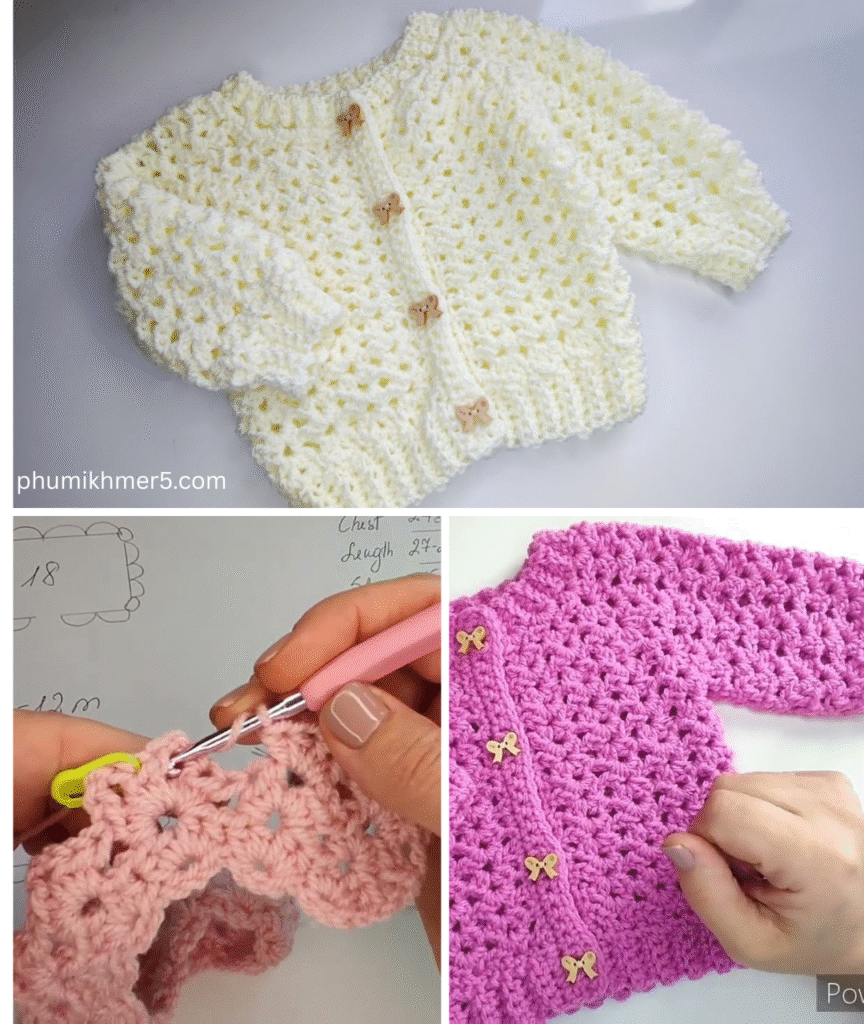
Part 4: The Sleeves (Optional or Short Sleeves for Summer)
For a true “summer” cardigan, you might opt for very short sleeves or no sleeves. If you want short sleeves, follow these steps.
- Join Yarn: Join yarn with a sl st in the center of one of the ch-2 armhole spaces.
- Sleeve Round 1: Ch 2 (counts as 1st dc). Work 1 dc into the same ch-2 space.
- Work 1 dc in each dc around the armhole, and 1 dc into the other side of the ch-2 armhole space.
- Join with a sl st to the top of the beginning ch 2.
- [Approx. 22-26 dc depending on size/gauge]
- Sleeve Round 2 (Optional, for slightly longer short sleeves): Ch 2 (counts as 1st dc). Dc in each dc around. Join with a sl st.
- Fasten Off, leaving a tail for weaving.
- Repeat for the second sleeve.

Part 5: Edging (Optional but Recommended for a Polished Look)
A simple border adds a neat finish to the button bands and hem.
- Join Yarn: Join yarn with a sl st at the bottom right corner of the cardigan (looking at the front).
- Row 1 (Bottom Hem): Ch 1 (does NOT count as a st). Sc in each dc across the bottom hem.
- Row 2 (Front Bands & Neckline): Ch 1, turn. Sc evenly up the side of the right front panel (about 1 sc per dc row end, or 2 sc per 3 rows for a smoother edge).
- When you reach the neckline, sc evenly around the neckline.
- Continue sc evenly down the side of the left front panel.
- Do NOT fasten off.
Part 6: Buttonholes (If Using Buttons)
This creates the loops for your buttons. Work these on the Right Front Panel if you want buttons on the left (traditional boys’ wear), or Left Front Panel for buttons on the right (traditional girls’ wear). This tutorial assumes traditional Girls’ Wear (buttons on Right Front Panel).
- Buttonhole Row: Ch 1, turn.
- Sc in the first few sc sts.
- Make Buttonhole: Ch 2, sk 2 sts (adjust ch/sk for button size). Sc in next few sts. Repeat for desired number of buttonholes (e.g., 3-5 evenly spaced).
- Sc in remaining sc sts up to neckline. Sc around neckline. Sc down other front panel. Sc across bottom hem. Sl st to join.
- Final Edging Row: Ch 1, turn. Sc in each sc around, working 2 sc into each ch-2 buttonhole space. Join with sl st.
- Fasten Off.

7. Finishing Your Summer Baby Cardigan
- Weave in All Ends: Use your yarn needle to carefully weave in any remaining loose yarn tails. Ensure they are very secure, especially for baby items.
- Attach Buttons (If Using): Sew your small buttons onto the opposite front band, aligning them with the buttonholes. Secure them very well with needle and thread.
- Blocking (Highly Recommended!):
- Blocking is crucial for garments to even out stitches, improve drape, and set the final shape.
- Wet Blocking (for cotton/blends): Gently submerge the cardigan in cool water with a little mild soap. Squeeze out excess water without twisting. Lay it flat on a clean towel or blocking mats. Gently shape it to the desired measurements (chest, length, sleeve opening). Pin in place if using mats. Let it air dry completely (24-48 hours).
8. Care for Your Crocheted Baby Cardigan
Always refer to your yarn label for specific care instructions. For most cotton or cotton blend yarns:
- Machine Washable: Usually machine wash on a gentle cycle in cool water.
- Drying: Lay flat to air dry to maintain shape. Avoid hanging wet garments, as they can stretch.
- Avoid Bleach: Do not use bleach unless specifically instructed by the yarn label.

Congratulations! You’ve just crocheted a beautiful and practical summer baby cardigan. This charming handmade garment is sure to be a treasured item, perfect for keeping a little one cozy on warmer days. Enjoy seeing it on a sweet baby!
Video tutorial:
